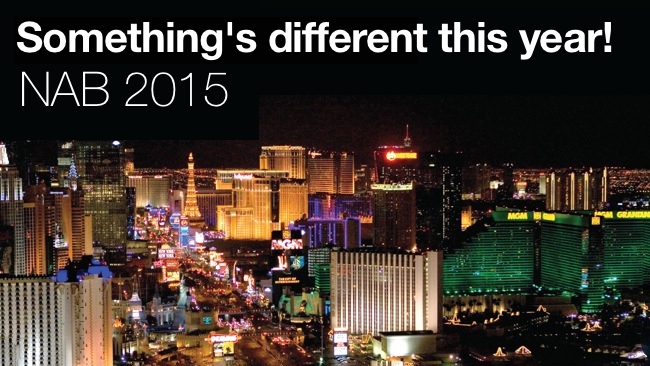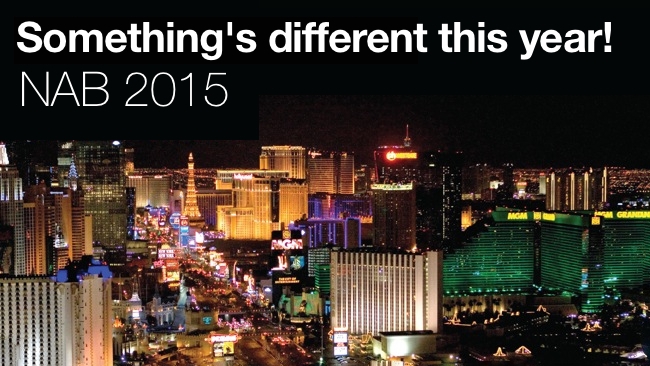

Something is different about NAB this year and it's probably a good thing as an industry once wedded to launching new products instead discovers the joy of upgrades, modularity, durability and extending the product life cycle. Buy a new camera today and the chances are it will last a lot longer than one even from just a few years ago.
The first day at the world's biggest show for the film and TV business is always something of a frenzy for news gatherers. There's an urgency that's unmatched anywhere else - especially first thing in the morning on opening day when the dash for the next press conference is moderated only by the need to ingest some breakfast at some point in the cycle.
Traditionally, big announcements are made at this time. Dozens of them. This year? Not so much. And that's probably a good thing.
Of course, there were the "traditional" announcements from Blackmagic, who had an almost unbelievable 38 new products; more than most companies have in their entire inventory.
But this normally fertile period for eye-catching headlines has been decidedly less abundant this year, but for some very good reasons.
Big announcements have been coming in for a few weeks now. It's hard to say exactly when it started but it might have been ARRI with their ALEXA SXT, the new take on the ALEXA with improved internals but essentially the same sensor as before. Canon announced the EOS C300 MK II a few days ago, and there have been a few other pre-show product launches that have taken the edge off the excitement of the actual show.
But there's a trend emerging behind the headlines that is a good thing for the industry.
Products are being made to be more upgradable, both physically and in terms of software.
Modularity is a very good thing, when it's done well and when it is supported by the manufacturers with new accessories and fittings. Perhaps the best example of this this year is Blackmagic's original URSA. When it was launched at last year's show, quite a big deal was made of the fact that the sensor would be swappable. At the time more than a few sceptics said "this will never happen. They'll be on to new cameras before they ever make an upgrade for the URSA". We now know that the URSA sensor mounting was made upgradable because when the camera was first released, a new sensor was already being designed and tested, and now new cameras can come fitted with it but, importantly, existing users can upgrade.
We like this, because users don't have to discard a perfectly good camera body just because there's a new sensor.
On the software side, there have been important changes over the last few years.
The latest generation of cameras, starting, perhaps, with the Sony F5 and F55 that were launched in 2012 (and are still very much current), have had numerous upgrades and new features added. In fact it's a rarity now to find cameras (and other equipment) that can't be upgraded with significant new features, just with software.
A prime example of this is Field Recorders (also called HDMI and SDI Recorders, or External Recorders). Convergent Design's Odyssey recorders have received an almost constant barrage of upgrades, and the same applies to Atomos' Shogun.
All of this is possible because of progress in the electronics and digital processing available to manufacturers. Companies like Sony are able to design chips that encapsulate intensive tasks like encoding and decoding their various codecs. When they design a chip to do this, they put in as much capability as they can - because it's expensive to design and make new chips. So, some products that use the chips won't necessarily use all the capabilities at launch, either because they're not appropriate or relevant to the product, or because the rest of the camera's firmware isn't ready to "break out" the features yet.
We've seen a good example with Sony's range of cameras that use their 1" type sensor. Gradually we've seen new variants of XAVC rolled out, that weren't "in" there in the first place.
But the most upgradable chip of all is the FPGA. These massively powerful devices have billions of logic gates that can be configured to do almost anything you like at boot-up. It's like running software processes at hardware speeds, and, as long as the chip is big enough, and fast enough - which they are, increasingly - they can do practically anything, including adding substantial new functions to an existing device.
At AJA's NAB conference there were no major product launches, but an important firmware update for the CION. "Firmware update" might sound rather sterile and unexciting, but the new release was based almost completely on customer feedback and feature requests. It made the camera even more like the one customers wanted it to be.
As cameras and other devices become more like "platforms" than devices that are "fixed" for their entire lifespans, we will see fewer headline announcements about new products, and more of a steady feed of upgrades. This is good because in a world that has limited physical resources then if we can avoid having to discard a perfectly good camera or whatever because the only way to get a new feature is to buy a new one, then we have made progress.
And an important benefit is that camera owners will get longer lives out of their investments.
So, while the slowdown in brand new products might suggest that technology itself is slowing down, we're actually seeing the opposite of this. As chips get more and more powerful, they will have more capacity for software upgrades. Now all we need to see is a modular camera that has a swappable processing unit. Because a good handle will always be a good handle. But if new processors come along that are orders of magnitude better, then cameras and accessories will be able to do things that were unimaginable when they were first released.
The future remains bright for innovation in our industry. It's just that we'll see it in a new, better way.
Tags: Business


Comments